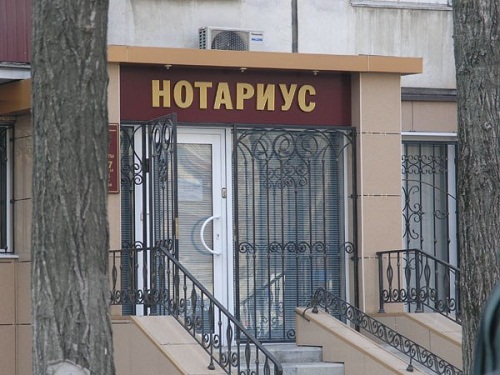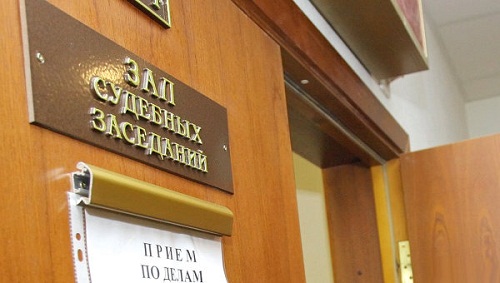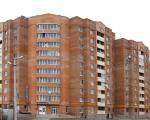How to privatize an apartment yourself?
The answer to the question “how to privatize an apartment on your own?” is in the law of the Russian Federation N 1541-1 of 07/04/1991 "On the privatization of the housing stock in the Russian Federation". Every Russian has the right to privatize (as well as de-privatize) his housing once free of charge. But the deadlines for the possibility of carrying out this procedure are a kind of byword in the housing sector. At the legislative level, this issue was raised more than once or even twice. As soon as the agreed deadline approaches, many people fill the corresponding authorities. All this is accompanied by endless queues, nerves and even fights. The authorities are forced to meet the needs of the people and once again postpone the deadlines. The current deadline is 2015.
Dear readers! Our articles talk about typical ways to resolve legal issues, but each case is unique.
If you want to know how to solve exactly your problem - contact the online consultant form on the right or call the numbers below. It's fast and free!
Advantages and disadvantages of privatization
Before directly engaging in the privatization of housing, every Russian should decide why he needs it.
Advantages of privatization:
- No payment under a social contract of employment. This is a kind of rent that each resident of a non-privatized apartment contributes to the local budget. The amount of the fee depends on the size and location of the housing. It fluctuates between 2-2.5 rubles per square meter.
- Freedom in property management. It can be sold or legally rented out, which is impossible in the conditions of social hiring.
- The owner of the apartment cannot be legally evicted. Even if he won't pay utility bills for many years. The only possible option is the sale of housing in court in order to compensate for losses. But this practice is very rare in Russia.
- Facilitated registration procedure. The owner of the accommodation, at his own discretion, can enter or write out any people. With social renting, only members of your family can be placed in an apartment. Yes, and then with the permission of all residents.
The disadvantages of privatization include:
- Increase in utility bills. The owner bears the cost of capital and current repairs of the house. Compared to social rent, the owner of privatized housing has to pay approximately 2 times more for such services.
- The appearance of expenses in the form of property taxes. The amount of tax from 2015 will be calculated according to.
- The complexity of inheritance of housing. If after the death of the owner of the apartment there is no will, then all relatives who will have to negotiate among themselves will claim the property.
- The absence of even a ghostly chance of a free improvement of living conditions. For example, when demolishing dilapidated housing, the owner is provided with an apartment of the same area without reference to location and cost. In the case of social tenancy, tenants could claim a larger living space if, in accordance with sanitary standards, it was not enough for the number of tenants living there.
Privatization of housing allows the efficient use of surplus real estate. It can be rented out, thereby recouping not only the costs of registration / utilities, but also making a tangible profit. If there is no possibility of providing an apartment for rent, then privatization can hurt the wallet.
How can I find out if the apartment is privatized?
The registration service can answer the question. If the apartment was privatized before 1998, then it may not have the relevant information. In this case, BTI can help. The following categories of citizens can apply here with a request:
- the owner or the person in whose name the general power of attorney is issued;
- heirs;
- tax authorities;
- law enforcement agencies;
- statistics service;
- local government;
- other persons that are provided by the relevant legislation.
There is also an indirect way to confirm privatization. It is enough to look at fresh (not older than 2 months) utility bills. They contain the information you are looking for.
Procedure for privatizing an apartment
How long does it take to privatize an apartment, you ask? This is a rather painstaking process, which is directly related to the whole "bouquet" of bureaucratic procedures. On average, it takes from a month (urgent privatization) to several months. For better understanding, let's try to disassemble the whole process in stages.
Stage 1
The first thing to do - enlist the support of all registered households, including minors between the ages of 14 and 18. They express their opinion independently, but with the consent of the guardianship and guardianship authorities. Failure of any of them may exclude the possibility of privatization. However, “refusal” is quite a working moment. There are situations when a person is about to receive an apartment at work or under a resettlement program. In this case, it is simply unprofitable for him to agree to privatization. There is only one way out - you need to notarize the refusal in favor of other tenants. Such a “refusal” will be required at least 2 times in the future, so you need to immediately take care of a copy.

At the same stage, you can include the collection of passports, birth certificates, marriage or divorce from all people registered in the apartment.
Stage 2
The essence of the stage is quite simple - obtaining a social tenancy agreement at the Department of Housing. Here it is also necessary obtain a certificate of payment for such housing. If there were any debts, they must be paid off.
Stage 3
Next, you need get a technical passport for an apartment. To do this, contact the BTI. They inspect the apartment and after some time (depending on payment and terms) will provide the cadastral and technical passport of the premises.
In parallel with this, it is necessary receive certificates of payment for all utilities. If there are debts, they must be paid off. There are times when a lump sum payment of debt is not possible. Then it is necessary to draw up a debt restructuring agreement with the service provider. It will indicate a certain period for which all debts for utilities will be covered.
In the DIO (department of property relations) it is necessary receive an extract confirming that the apartment is municipal. Procedure for obtaining an extract:
- First you need to apply.
- In about a week, you can receive the document itself. The procedure itself is free.
Additionally useful help form-3, which is issued in any passport office. This is a document that confirms the number of people living in the apartment. You will need two copies. It is worth noting that the certificate is valid only for 10 days - it makes no sense to take it in advance.
Stage 4
By this time, the following documents should be on hand:
- passports and birth certificates of all people registered in the apartment;
- if someone refused privatization - a notarized refusal (or refusals);
- contract of social employment;
- cadastral passport;
- technical certificate;
- 2 references F-3;
- receipts or other evidence of the absence of utility debt;
- extract from DIO.
With all of the above documents go to the housing department. It is they who draw up the privatization agreement. Registration is paid. Depends on deadlines. You can order urgent privatization - the documents will already be on hand in 2 weeks, but the cost will be higher. The standard processing time is 60 days.
Having paid the required fee through the bank, it is necessary to return to the Housing Fund within the established time limits. They will give part of the documents and, most importantly, an agreement on the transfer of ownership of the specified apartment to citizens. There will be 4 such contracts in total, but 2 are issued to citizens. It is necessary to sign in all.
Stage 5 (final)
Before the finish line, the following documents must be in hand:
- technical certificate;
- cadastral passport;
- privatization agreement;
- certificate f-3 in one copy. The second will be taken by the Housing Fund to the archive;
- notary-certified refusals;
- extract from DIO;
- The housing department will issue you a certificate of absence of housing that has been privatized.
These documents are required take it to the state registration service and pay the appropriate fee. It is 1000 rubles. Moreover, receipts must be provided from all the people who live in the apartment. For example, if 4 persons participated in privatization, then 4 receipts of 250 rubles each must be paid.
Answer the question "how much does it cost to privatize an apartment?" quite difficult due to the existence of a sufficiently large number of factors. This includes the presence / absence of additional costs for a notary (if there are “refuseniks”) and the chosen mode of execution of a privatization agreement in the Housing Department.
What to do if the commissioners unlawfully refused to privatize?
It is also possible to privatize housing through the court. To do this, you must file a claim, supporting it with all the documents you have collected and directly refusing to privatize the apartment.

Residential area that is prohibited from privatization
Housing that is not subject to privatization includes:
- apartments in military camps;
- museum apartments;
- almost all office premises in enterprises;
- any premises on the territory of parks, gardens, nature reserves, museums;
- apartments that are located in houses with an emergency condition;
- premises that belong to the zones affected as a result of major man-made accidents. For example, the Chernobyl exclusion zone and others.
Sale of a privatized apartment
Since a privatized apartment is owned by an individual citizen of the Russian Federation (or several citizens), the law does not in any way prohibit its sale or exchange for another living space, except for individual cases.
The most important thing here is respect the rights of minors. The sale of the apartment is possible only after the full consent of the guardianship authorities. To do this, it is necessary to confirm that minor family members will not be harmed as a result of such a sale.
In this regard, the legal requirements are somewhat vague. And it often happens that an inspector from the guardianship authorities can show remarkable imagination in his requirements. Definitely, all documents confirming kinship with a minor will be required. The rest is better to clarify at the first meeting with the inspector. Preferably in writing, so that, in case of misunderstanding, you can appeal to something. Otherwise, the list of documents for sale is no different from what is drawn up under a regular real estate purchase and sale agreement.
Deprivation and what does it mean
There are cases when citizens want to return their housing back to municipal use. The most common case is when the house is about to be demolished and there is an opportunity to get housing with an area larger than it is now.
Deprivatization is also often used by pensioners, who find it very difficult to pay all utility bills and fees, which is sometimes used by various housing swindlers. To refuse privatization, you need to collect the following documents:
- application for waiver of ownership (it must be signed by all owners);
- a photocopy of the passport;
- extract from the house book;
- technical certificate;
- receipt confirming payment of the registration fee;
- a copy of the personal account;
- cadastral passport;
- housing should not be illegally re-planned or rebuilt (a document is required that confirms this).
With the listed documents, the owner must go to the Housing Department and arrange for deprivatization, in accordance with existing procedures.
conclusions
The efforts expended on privatizing living space are paid off with greater freedom of action. At the same time, utility and other payments are growing, when compared with the conditions of social employment. Privatization is voluntary. The legislation does not provide for any levers of pressure on people who want to continue to use social hiring. What to choose - to decide directly to the residents. A correct assessment of the pros and cons is the key to a correct and harmonious solution.




